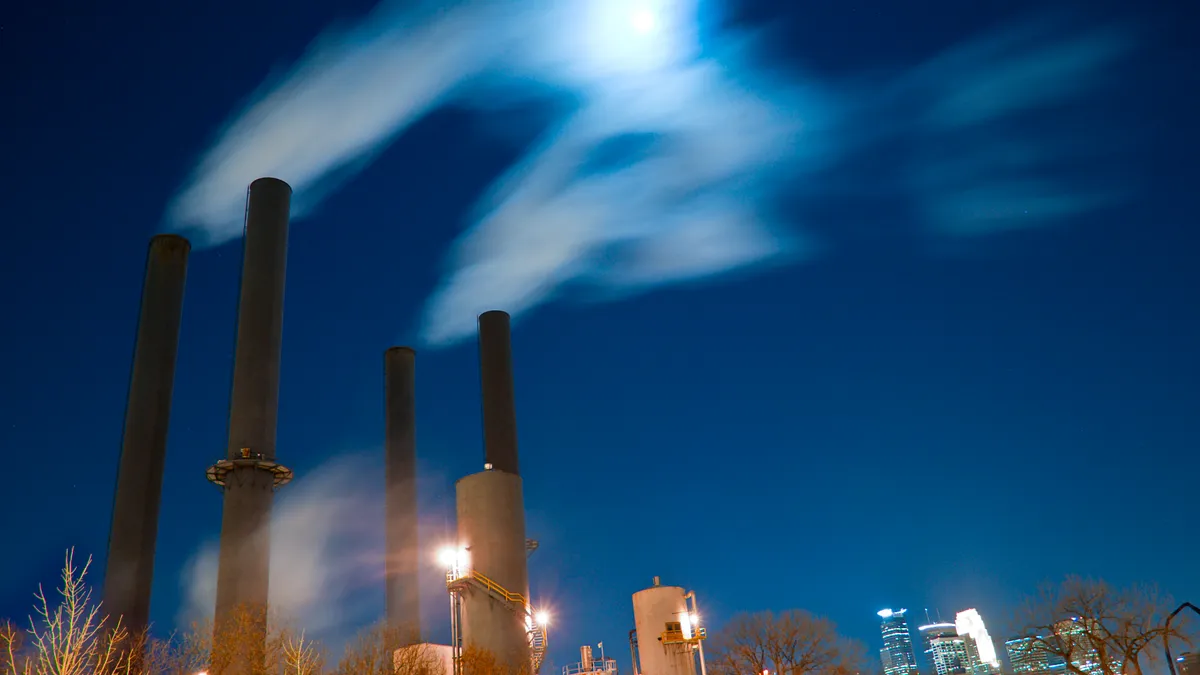Dive Brief:
- The Environmental Protection Agency late last month moved forward with enforcement of pollution regulations that govern sulfur dioxide (SO2) and ground-level ozone, finding six counties that do not meet SO2 standards.
- EPA notified states with areas not already given compliance designations for ozone that it would finalize its designations within 120 days. The agency acted after lawsuits from environmental groups and states, as well as a federal court order requiring EPA report when it will issue final information on ozone.
- Separately, a group of eight Northeastern states sued the EPA for denying a petition that would have forced Midwestern states to install pollution controls for emissions that drift over state lines.
Dive Insight:
Pushed forward by lawsuits and a court order, the EPA crossed key milestones in its enforcement of ozone and SO2 regulations in the week before Christmas.
In November, EPA concluded that about 85% of U.S. counties are in compliance with ozone standards set in 2015 by the Obama administration. It withheld judgment, however, on about 10% of counties, including large metropolitan areas like Jefferson, Kenton and Campbell Counties in Kentucky and Hamilton, Franklin and Cuyahoga Counties in Ohio, the National Law Review notes.
Environmental groups and 15 states sued the EPA in early December, saying it should have published all ozone designations by an early October deadline the agency set for itself. On Dec. 19, the D.C. Circuit Court weighed in, issuing an order to require EPA to report on when it plans to issue final ozone designations.
On Dec. 22, the EPA took a step forward, notifying states of which areas it anticipates will be found in nonattainment of the 2015 ozone standards. The anticipated areas include counties in Louisiana, Texas and other states. EPA's letters to states are available on its webpage.
A day earlier, on Dec. 21, EPA also issued the third of four rounds of SO2 designations. Both SO2 and ozone are governed by the same regulation, the National Ambient Air Quality Standards (NAAQS).
For SO2, EPA said six areas were designated as in nonattainment of federal standards, and 50 remain to be classified. The agency said in a statement that it would support decisions from states to install new air monitors so they can "gather three full calendar years of data to inform a designation by the end of 2020." Compliance information for each county is available in EPA's order.
Movement on NAAQS compliance, however, came alongside a separate challenge to the agency's pollution enforcement. Led by New York, eight Northeastern states sued the agency for denying a petition they submitted in 2013 that would have added eight Midwestern states and part of another to the EPA's Ozone Transport Region, which would require them to take more action to reduce cross-state pollution that causes ground-level ozone.
EPA had originally proposed denying the petition on the last day of the Obama administration, the Washington Examiner notes. The agency argues other regulations, such as the "good neighbor" provision of the Clean Air Act or the Cross State Air Pollution Rule, can better handle the pollution issue.













